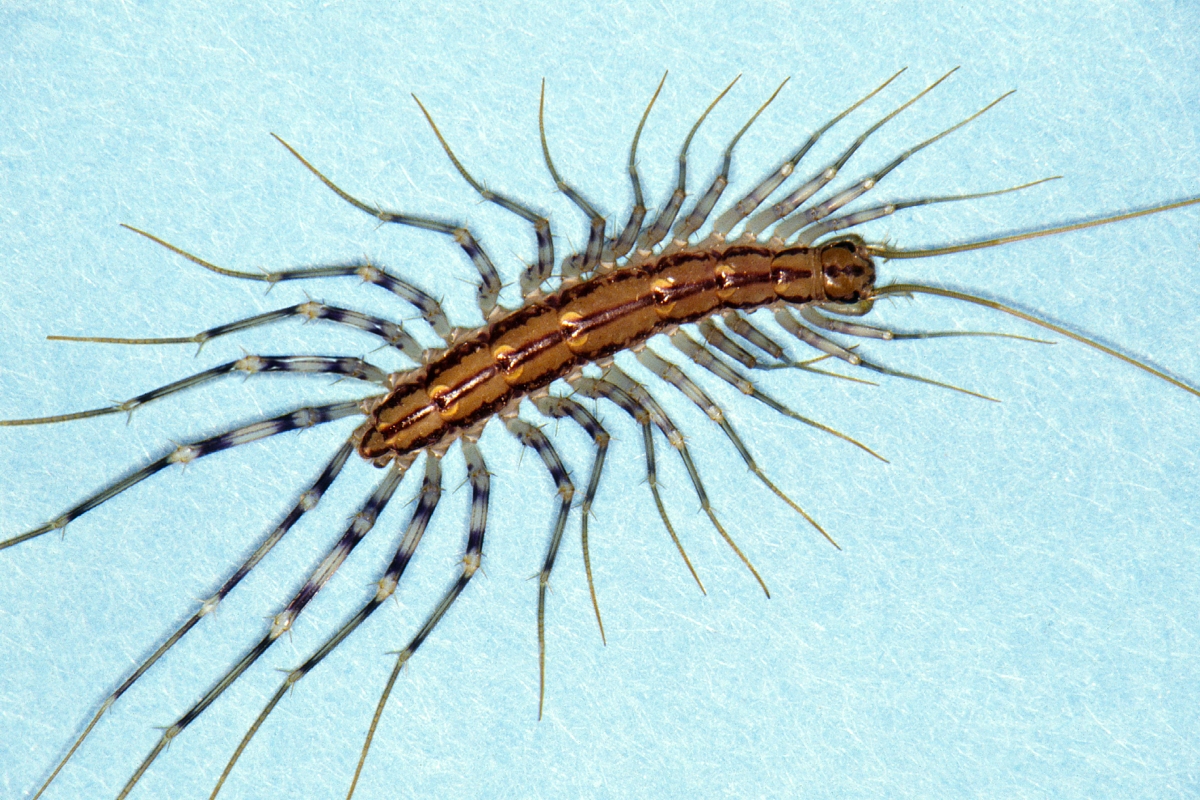
By Kait Chapman, Extension Educator in Lancaster County
Similar to people, winter beckons arthropods indoors, seeking warmth from the cold. Nonetheless, bugs might venture inside at any season, and among them are centipedes. Centipedes are not insects. Instead, they are in a closely related class of their own called Chilopoda. Centipedes can be distinguished from millipedes by the number of legs attached to each segment of their body. Where millipedes have two pairs of legs per segment, centipedes have one pair. Centipedes and millipedes also live very different lifestyles. Millipedes are generally considered decomposers, feeding on decaying organic matter, while centipedes are predatory, eating other small invertebrates or animals.
While the majority of centipedes may be encountered outdoors in the garden or landscape, one type likes to share an indoor space with people: the aptly called house centipede. The first time someone sees a house centipede, it’s a shock due to their “alien-like,” creepy-crawly appearance. But, while their long, 15 pairs of legs may seem intimidating, they are harmless to people, pets and home and, are more often, a nuisance than a serious infestation issue. That being said, the majority of homeowners would rather not share their living space with any type of bug, let alone a centipede.
If you do find yourself with house centipedes in your home, your first course of action should be to evaluate the situation. It is possible that a single centipede happened to make its way indoors and no further action is needed. If house centipedes are encountered frequently, it could indicate there is another buggy issue occurring. Centipedes need to eat, so figuring out what they are feeding on and remedying that problem, could solve the problem.
Effective monitoring involves using strategically placed sticky traps around the house. Once the issue is pinpointed, an integrated pest management plan comes into play:
• Treat any prey insects that are present in the home.
• Keep centipedes out by sealing entrance areas with caulk or installing screens in floor drains.
• Use a dehumidifier to keep moisture levels low.
Pesticides are often unnecessary but are available if needed. Use products specifically labeled for use inside homes, and always follow the label directions.
FOR MORE INFORMATION
To find out more about house centipedes and their management visit: https://go.unl.edu/house-centipede